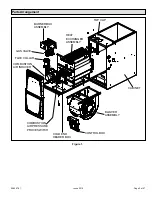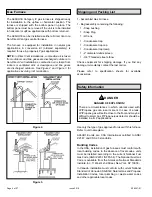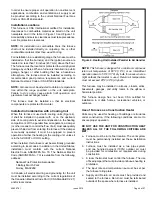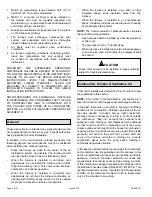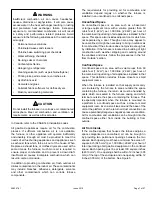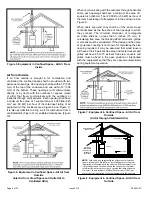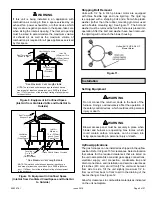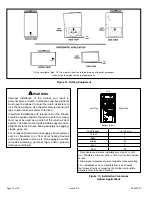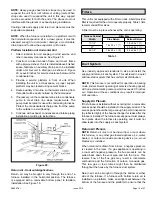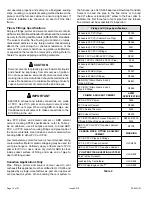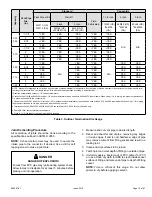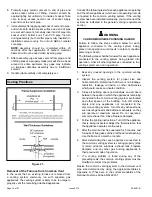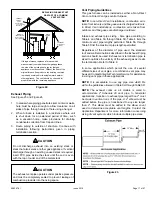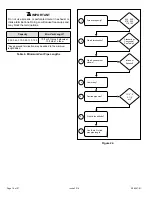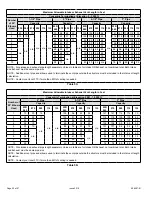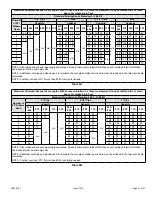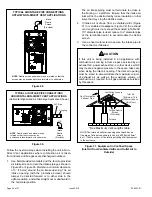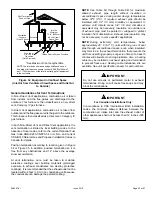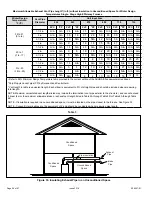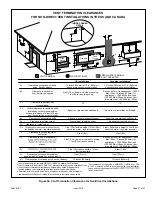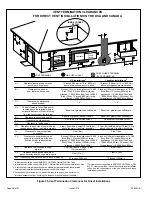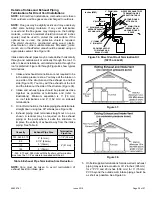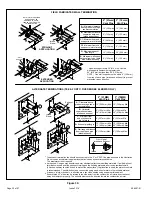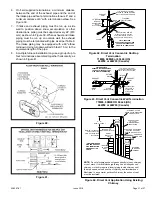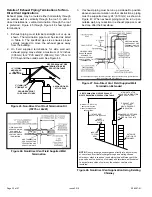
508297-01
Page 17 of 57
Issue 2219
Figure 22.
CHIMNEY
OR GAS
VENT
(Check sizing
for remaining
appliance)
FURNACE
(Removed from
from common
vent system)
WATER
HEATER
OPENINGS
(To Adjacent
Room)
If this gas furnace replaces a furnace which
was commonly vented with another gas appliance,
the size of the existing vent pipe for that gas
appliance must be checked. Without the heat of the
original furnace flue products, the existing vent pipe
is probably oversized for the single water heater or
other appliance. The vent should be checked for
proper draw with the remaining appliance.
REPLACING FURNACE THAT
WAS PART OF A COMMON
VENT SYSTEM
Exhaust Piping
1. In areas where piping penetrates joist or interior walls,
hole must be large enough to allow clearance on all
sides of pipe through center of hole using a hanger.
2. When furnace is installed in a residence where unit
is shut down for an extended period of time, such
as a vacation home, make provisions for draining
condensate collection from trap and lines.
3. Route piping to outside of structure. Continue with
installation following instructions given in piping
termination section.
Do not discharge exhaust into an existing stack or
stack that also serves another gas appliance. If vertical
discharge through an existing unused stack is required,
insert PVC pipe inside the stack until the end is even
with the top or outlet end of the metal stack.
CAUTION
The exhaust vent pipe operates under positive pressure
and must be completely sealed to prevent leakage of
combustion products into the living space.
CAUTION
Vent Piping Guidelines
This gas furnace can be installed as either a Non-Direct
Vent or a Direct Vent gas central furnace.
NOTE:
In non-Direct Vent installations, combustion air is
taken from indoors and flue gases are discharged outdoors.
In Direct Vent installations, combustion air is taken from
outdoors and flue gases are discharged outdoors.
Intake and exhaust pipe sizing - Size pipe according to
Table 4 and Table 5A through Table 5D. Table 4 lists the
minimum vent pipe lengths permitted. Table 5A through
Table 5D list the maximum pipe lengths permitted.
Regardless of the diameter of pipe used, the standard
roof and wall terminations described in the Exhaust Piping
section should be used. Exhaust vent termination pipe is
sized to optimize the velocity of the exhaust gas as it exits
the termination. Refer to Table 8.
In some applications which permit the use of several
different sizes of vent pipe, a combination vent pipe may
be used. Contact Allied Air Technical Service for assistance
in sizing vent pipe in these applications.
NOTE:
It is acceptable to use any pipe size which fits
within the guidelines allowed in Table 5A through Table 5D.
NOTE:
The exhaust collar on all models is sized to
accommodate 2” Schedule 40 vent pipe. In horizontal
applications, transition to exhaust pipe larger than 2” must
be made in vertical runs of the pipe. A 2” elbow must be
added before the pipe is transitioned to any size larger
than 2”. This elbow must be added to the elbow count
used to determine acceptable vent lengths. Contact the
Application Department for more information concerning
sizing of vent systems which include multiple pipe sizes.
Figure 23.

